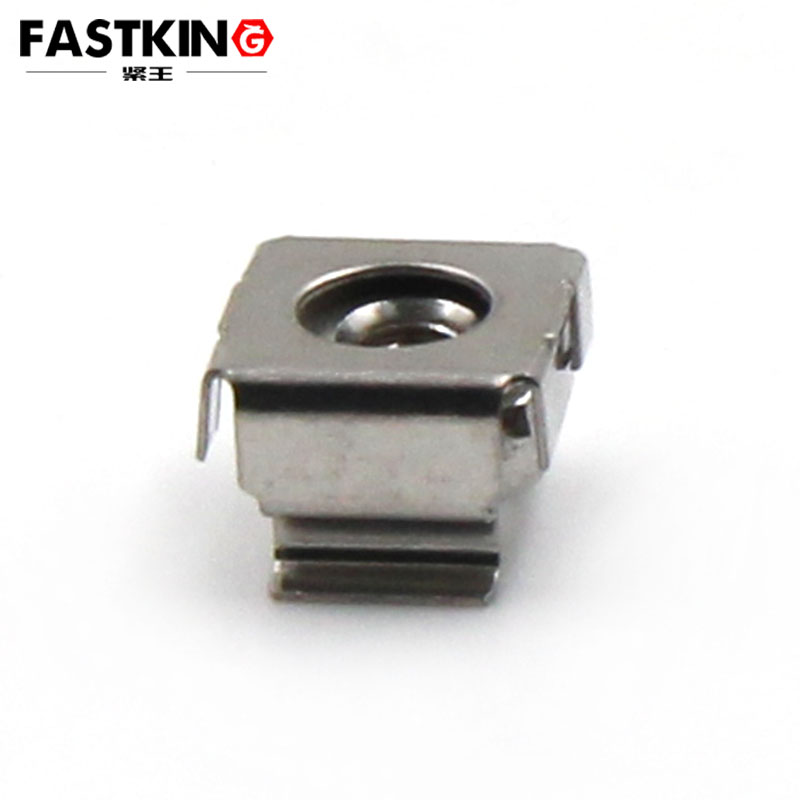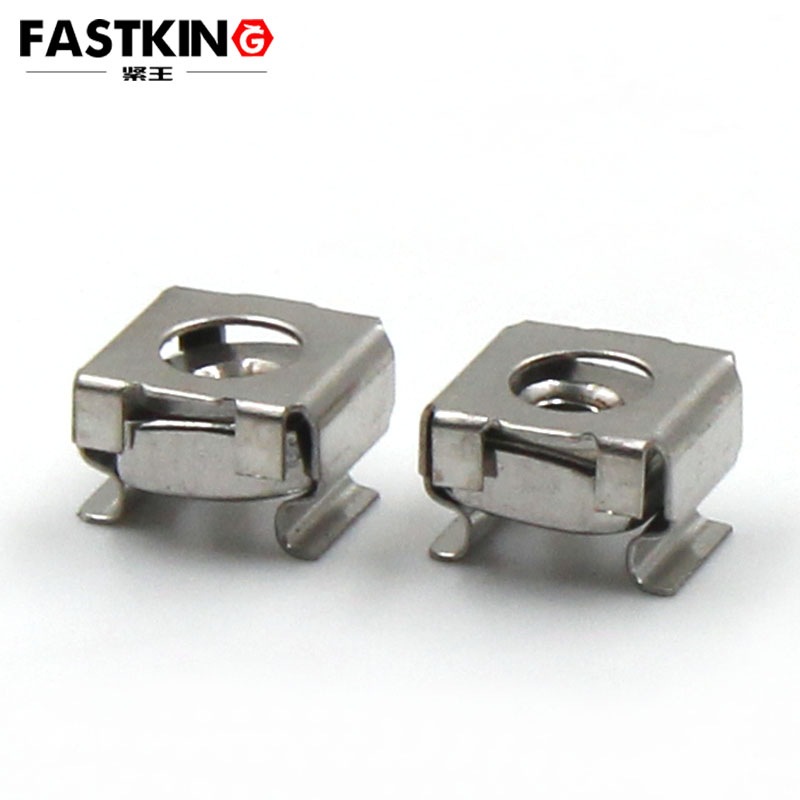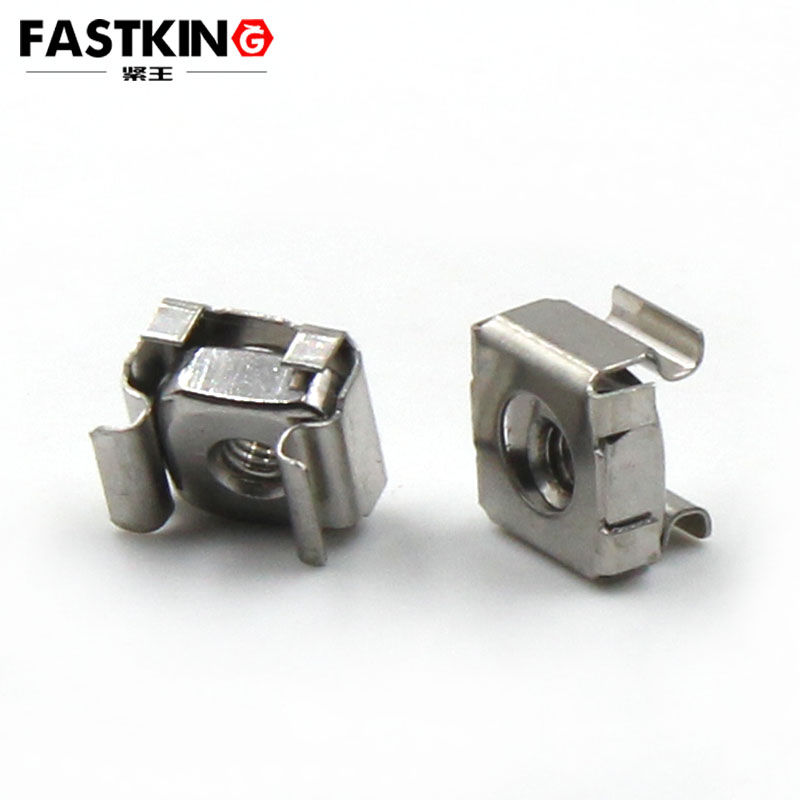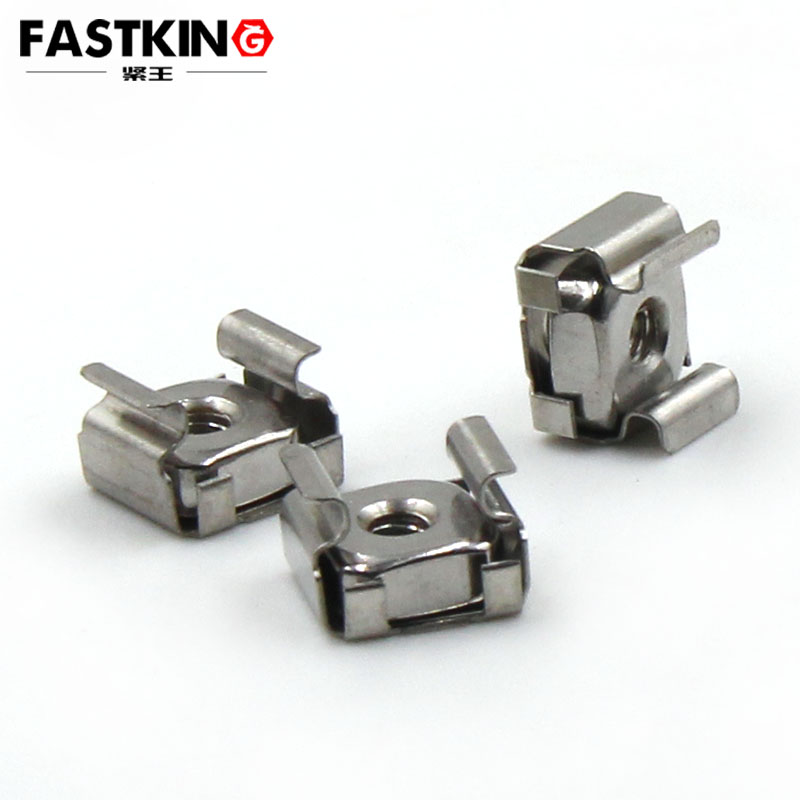I. Introduction
Cage nuts, also known as cage clips or clip-on nuts, are widely used fasteners in mechanical assembly, electronic equipment, automotive manufacturing, aerospace, and other fields. Their unique design offers high flexibility and convenience during installation and removal, making them particularly suitable for applications requiring frequent adjustments or maintenance. This article provides a detailed introduction to the usage scenarios and installation methods of cage nuts to help readers better understand their application value.

II. Structure and Features of Cage Nuts
Cage nuts typically consist of two parts: the nut body and the spring steel clip (or "cage"). The nut body is a standard hex or square nut, while the spring steel clip wraps around the nut, forming an elastically deformable structure. This design allows the cage nut to snap into pre-drilled mounting holes through the elastic deformation of the spring steel clip, enabling quick installation and secure fastening.
Key features of cage nuts include:
Easy Installation: No additional tools are required; simply press the cage nut into the mounting hole to secure it.
High Adjustability: Cage nuts can slide freely within the mounting hole, allowing for easy position adjustments.
Excellent Vibration Resistance: The spring steel clip design ensures reliable fastening even in high-vibration environments.
Wide Applicability: Suitable for use with panels of varying thicknesses and multiple material types.
III. Usage Scenarios of Cage Nuts
Due to their unique structure and performance, cage nuts are widely used in the following scenarios:
Cabinet and Chassis Installation
In electronic equipment, communication cabinets, server chassis, and similar applications, cage nuts are commonly used to secure panels, rails, brackets, and other components. The limited internal space of cabinets and the need for frequent disassembly and maintenance make cage nuts an ideal choice due to their ease of installation and adjustability.
Automotive Manufacturing
In automotive manufacturing, cage nuts are often used to secure interior components, dashboards, seat brackets, and other parts. The high efficiency required on automotive assembly lines makes the quick installation feature of cage nuts a significant advantage. Additionally, the vibration resistance of cage nuts helps prevent loosening during vehicle operation.
Aerospace
In the aerospace industry, cage nuts are used to secure aircraft interiors, dashboards, and electronic equipment. Given the stringent weight and reliability requirements in aerospace applications, the lightweight and high vibration resistance of cage nuts make them a preferred fastener.

Industrial Equipment
In industrial equipment assembly, cage nuts are commonly used to secure control panels, sensors, cable brackets, and other components. Industrial equipment often requires regular maintenance and adjustments, and the adjustability and ease of removal of cage nuts can significantly reduce maintenance time.
Furniture Manufacturing
In furniture manufacturing, cage nuts are often used to connect panels and secure brackets. Their hidden design not only enhances aesthetics but also improves the stability and durability of furniture.
IV. Installation Methods of Cage Nuts**
The installation of cage nuts is relatively simple, but attention to detail is necessary to ensure secure and reliable fastening. Below are the steps for installing cage nuts:
Preparation
Ensure the mounting hole size matches the cage nut specifications. Typically, the hole diameter should be slightly larger than the outer diameter of the cage nut's spring steel clip to facilitate installation.
Clean the mounting hole and surrounding area to remove any oil, dust, or debris that could affect installation.
Installing the Cage Nut

Align the spring steel clip of the cage nut with the mounting hole, ensuring the nut body is centered.
Gently press or tap the cage nut with a hand or rubber mallet to gradually insert the spring steel clip into the mounting hole. Apply moderate force to avoid damaging the clip or the mounting hole.
Once the cage nut is fully inserted, the spring steel clip will return to its original shape, securely fastening the nut in place.
Checking the Installation
Verify that the cage nut is properly installed and that the spring steel clip is fully expanded and tightly fitted against the mounting hole.
Gently shake the cage nut to check for looseness. If any movement is detected, reinstall or replace the cage nut.
Installing the Bolt
Insert the bolt into the cage nut and tighten it using a wrench or screwdriver. Avoid over-tightening, as this may damage the threads or cause the cage nut to loosen.
V. Precautions
Selecting the Appropriate Specifications
Cage nuts come in various specifications, including different thread sizes, nut shapes (hex or square), and spring steel clip thicknesses. Choose the appropriate cage nut based on your specific requirements to ensure optimal installation.
Avoiding Excessive Force
During installation, avoid using excessive force when pressing or tapping the cage nut, as this may deform or damage the spring steel clip.
Regular Inspections
In high-vibration or high-impact environments, regularly inspect the tightness of cage nuts and make adjustments or replacements as needed to ensure equipment safety.
VI. Conclusion

As an efficient and convenient fastener, cage nuts are widely used in cabinet installation, automotive manufacturing, aerospace, industrial equipment, and furniture manufacturing. Their unique structural design offers significant advantages during installation and removal, greatly improving assembly efficiency and reducing maintenance costs. By selecting and using cage nuts correctly, the stability and reliability of equipment can be effectively enhanced, providing strong support for the successful implementation of various engineering projects.
